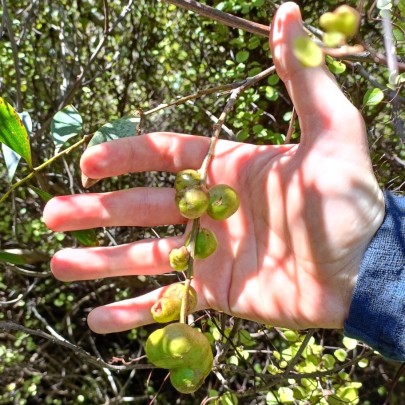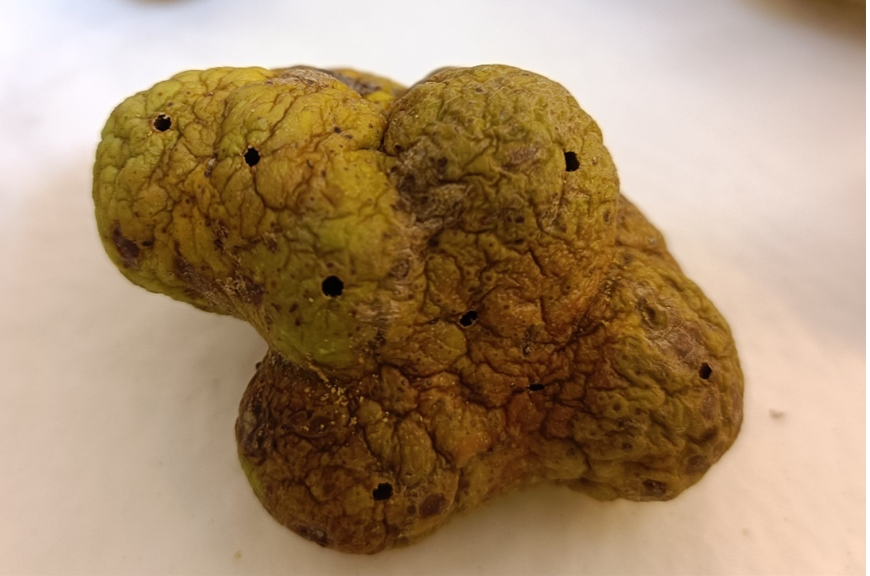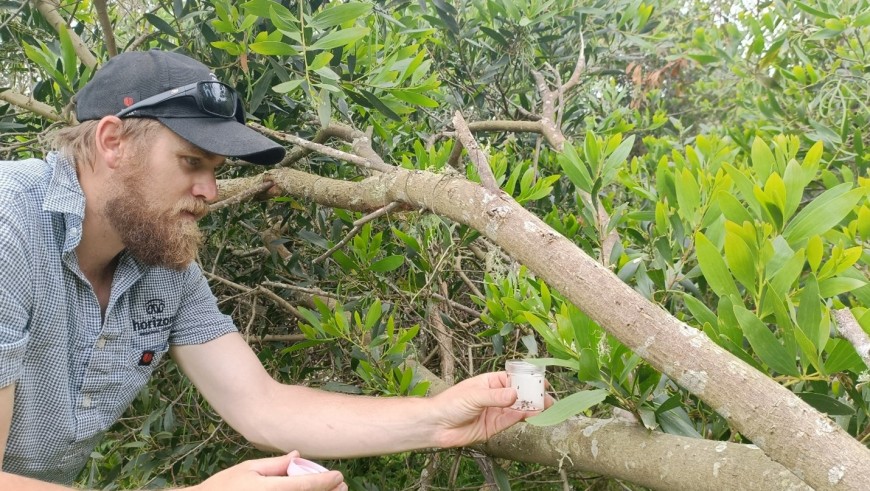A Flying Start for a Bud-Galling Wasp

Image: first galls sighted on Sydney golden wattle at release site in early summer.
In August 2023 enough time had passed to detect the development of galls at the release sites, and the team was pleasantly surprised to find three galls at their very first stop. “It was wonderful to see galls for the first time in New Zealand, suggesting a successful first release of the bud-galling wasp. This was a promising first sign that the wasp has great potential as a biocontrol agent for Sydney golden wattle here,” said Angela Bownes, who made the first release of the wasp with Horizons Regional Council staff and Research Associate Richard Hill.
A second consignment of galls was collected and hand-carried to New Zealand in November 2023 by Fiona Impson, a world expert on weedy wattles from the University of Cape Town, South Africa. For biosecurity reasons it is not possible to remove the galls infested with wasp larvae and pupae from containment. Instead, freshly emerged wasps that have chewed their way out of the galls are collected daily for release. For each consignment, independent experts carry out rigorous testing, including identification of the wasp to confirm we are releasing the correct species, and disease testing to ensure the wasps are healthy and disease free, thus preventing the inadvertent release of any harmful organisms into the New Zealand environment.

Image: numerous emergence holes on an imported gall.
Because the adult wasps only live for a few days, timing is critical to ensure these tests are completed in good time to gain MPI approval to remove the wasps from containment as quickly as possible. Galls in the second consignment from South Africa yielded 180 wasps, which were again released in Manawatū-Whanganui with the help of Horizons Regional Council staff Jack Keast and Robbie Sicely.

Image: Jack releasing wasps at Waitārere Beach.
A third shipment of galls was planned in early December with the help of John Hoffman (University of Cape Town), but unfortunately this never made it to New Zealand due to issues with the transport of live insects by the only available airline at the time. “It turned out to be a very disappointing situation because we wanted to release more wasps in new areas this summer,” said Arnaud Cartier, who has overseen the process to get the wasps out of containment since the start of this project.
To avoid such disappointment again, the team will opt to hand-carry galls to New Zealand next summer to ensure high numbers of wasps are available for release in other invaded regions such as Northland and Matakana Island.
Funding
This project is funded by the National Biocontrol Collective and the Ministry for Primary Industries’ Sustainable Food and Fibre Futures Fund (Grant #20095) on multi-weed biocontrol.
Key contact
